Reviews
L’histoire D’Adèle H.
François Truffaut
France, 1975
Credits
Review by Thomas Scalzo
Posted on 16 April 2010
Source MGM/UA DVD
This incredible thing, that a young girl should step over the ocean, leave the old world for the new world to join her lover … this thing will I accomplish.
The year is 1863, and the United States is embroiled in a civil war. All travelers arriving at the British-controlled port city of Halifax must be cleared of any Yankee-sympathy suspicions before being allowed to enter. Amidst the turmoil of the docks, a young woman slips past the guards and into the city, quickly hailing a cab and making her way to a respectable boarding house. It is soon revealed that the young woman - who introduces herself as Miss Lewly - has come to Halifax to reunite with her beloved, a solider named Lieutenant Pinson who was compelled by military duty to leave England. Thus, the stage is set for an emotionally charged period romance. Or so it would seem.
When Lieutenant Pinson and Miss Lewly eventually come face to face, instead of a tear-filled reunion we witness Pinson’s cold declaration of disinterest. The lieutenant, it seems, no longer loves Miss Lewly, and has gone out of his way to obtain a military post as far from her as he could. Demanding that she return to England at once, he attempts to leave. Miss Lewly, however, cannot accept this fate: she clings onto Pinson’s coat in desperation, declaring her love and endless devotion. Though Pinson leaves without offering anything that could be considered a reason to hope, Miss Lewly quickly convinces herself that their love is real, and that in time he will come around.
The subsequent story is thus far from the expected romantic melodrama, focusing instead on the inner torments of a young woman and her desperate efforts to generate affection where there is none. What is more, we soon learn that the desperate Miss Lewly is in fact Adele Hugo, daughter of the inimitable French author and polemicist Victor Hugo. Thus, as the film continues its steady march away from a standard romance and toward a sad and haunting tale of obsession and creeping madness, we’re offered an added layer of narrative shock when we understand that this is a true story, the tale of a passionate, confused, unhappy, and moribund woman largely forgotten by history.
As the revelation of Adele’s lineage is made, we can only assume that Truffaut is using the film as an opportunity to shed new light on a dusty, but fascinating moment in time. As the film progresses, however, it becomes clear that Adele’s position on the fringes of history owes less to fickle historians and more to her own ineffectualness. Aside from accomplishing the “incredible thing” noted in the quotation above, all she does with her life is pine away for a man she’ll never have, sinking ever deeper into her own delusions until she is literally incapable of recognizing the object of her desire when he passes her on the street. It is a pitiable existence, to be sure, but it’s hard to understand why Truffaut would choose such an obscure and uneventful life as the subject of a film.
The beginnings of an answer can be found in the way Adele continuously sets herself apart from her famous family. At no point during the film does she speak her true name aloud, always referring to herself as Miss Lewly. And when a reference to her father is unavoidable, she resorts to such evasive tactics as tracing the letters of his name in a dusty mirror. Why does she hide her true identity? The easy answer is that she wants to avoid calling attention to herself and her family, especially at a time when her father had been exiled from France, and she found herself in an English-controlled city with a large French-speaking population.
In examining the matter more deeply, however, it becomes clear that Adele’s reasons for distancing herself from her famous name are personal, not political. One of her first acts upon arriving in Halifax, for example, is to acquire a substantial amount of paper. Declaring she “has a lot of writing to do,” she subsequently stays up late into the night pouring her soul onto page after page. Although the futile quest to win back Lieutenant Pinson is never far from her thoughts, these moments of solitary literary work also seem to be something she has been craving. Indeed, a significant portion of the film is comprised of nothing more than Isabelle Adjani’s beautiful, tormented face laboring over her work. For a girl with a literary bent, having a man who was arguably the world’s most famous writer as a father must have been torture, a constant source of inevitable comparison and self-ridicule.
And unfortunately for Adele, her familial torments are not limited to her father. A telling moment occurs when Adele is discussing her family history with Mrs. Saunders, the boardinghouse keeper. After Mrs. Saunders expresses some sorrow for never having any siblings, Adele remarks, “You don’t know how lucky you were to be an only child.” As we learn, Adele’s older sister died tragically when a newlywed of 19. Distraught at the idea of continuing his life without his beloved, the girl’s husband took his own life. For Adele, this perfect romance is the model by which she measured her own relationships, and so the idea of following Lt. Pinson across the sea and reuniting with him in a new world must have been extremely appealing to her. In fact, it is this fantasy romance, not Lt. Pinson himself, that drives Adele. At times, one has the impression that this trip to Halifax is as much a desperate attempt at freedom and self-discovery as it is about finding her beloved.
As the tragic tale continues, and Adele slips further and further into her own muddled view of existence, we understand the impossible standards Adele has determined to live up to, both in her literary aspirations, and her efforts to play the part of the dutiful daughter and ideal wife. Taken in this light, one can better understand Truffaut’s attraction to this character. As a critic, a man by profession compelled to seek out the best of what his craft had to offer, he put himself in the impossible position of wanting to add his own voice to a medium he venerated. The struggle to create something timeless and perfect, just like the filmmakers he so admired, must have weighed heavily on him.
There is one glimmer of hope in the midst of this sorrowful tale, however: a plotline that allows us to believe, for a brief moment, that a happy life for Adele is still possible. This opportunity comes to Adele in the form of a retiring bookshop owner. A lonely man, who walks with a cane and spends all his life in the presence of the written word, he immediately takes a liking to the strange young woman who brusquely enters his shop one day asking for paper. Unlike the staid customers of the town, who more likely than not purchase books for decoration more than enjoyment, this woman is alive, passionate, and possessed of an uncontrollable compulsion to delve into the darkest corners of herself and write until she is insensible. The damaging effects of this fervor becomes readily apparent when, after purchasing another two reams of paper, she collapses in the snow-covered streets, apparently a result of a lack of both sleep and nutrition.
After a few of these fleeting encounters, and a thwarted attempt to visit the girl at the boarding house where she lives, the bookshop owner decides to give Adele a present. Having recently discovered her true identity, he imagines that a leather-bound copy of her father’s most famous work, Les Misérables, would be the perfect gift. For a few moments, before Adele unwraps this ill-chosen present, we hold the faintest hope that she will finally recognize the caring man before her, and put aside her soul-destroying quest to find Pinson. Sadly, this is not to be. Adele unwraps the gift, and then storms out of the store, immediately plunged back into the unachievable dictates of her existence. The bookshop owner is heard from no more.
With this one last opportunity for a normal existence squandered, Adele reverts even further into the beleaguered world of her own mind. There are still moments in which she stalks Pinson, though even that quest ultimately takes a backseat to Adele’s increasingly feverish writing. Fittingly, Truffaut spends a significant portion of the film training his camera directly on Adjani’s lovely face, gazing at the woman intently as she feverishly records her thoughts. It is a bold decision, devoting so much screen time to what amounts to watching a woman write. And for a casual viewer, these regular moments of deliberate inaction may well be a turn-off. For those willing to relax into the film, however, and not expecting that the action will pick up or that a standard romance narrative will come into play, these moments of a distressed soul struggling to understand herself are haunting, sad, and beautiful.
All told, Truffaut does an admirable job injecting what might have been a rather thin story with a depth and an emotion that keeps us at least objectively interested in the fate of this strange girl. However, the very perniciousness of Adele’s quest to accomplish something of her own, her unrelenting desire to free herself from her past and craft a new self in this new world, and her inability to live in the reality of the moment ultimately leaves us frustrated. If only she had shown the least spark of compassion or interest in the bookshop owner. If only she had been able to tear herself away from her obsessions for a few moments of fun. If only she were able to smile at something other than the thought of her dreams coming true, we would have been much more enamored of her.
Of course, the real Adele H. never did break free of her self-made prison, and in order to accurately tell her tale, Truffaut clearly could not have allowed her to do so. This devotion to accuracy, however, leaves us with a film that never manages to completely draw us in. Like Adele, the film is intriguing and beautiful, yet cold and distant.
More Love on the Run: The Films of François Truffaut
-

Les Mistons
1957 -
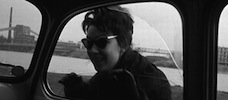
Une histoire d’eau
1958 -
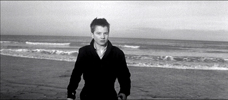
The 400 Blows
1959 -
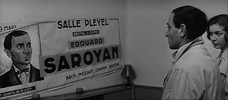
Shoot the Piano Player
1960 -
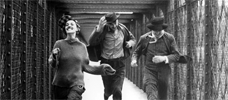
Jules and Jim
1962 -
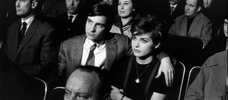
Antoine and Colette
1962 -
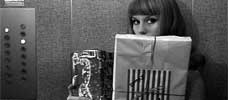
The Soft Skin
1964 -
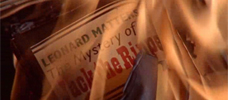
Fahrenheit 451
1966 -

The Bride Wore Black
1968 -
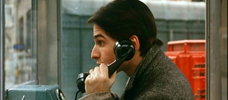
Stolen Kisses
1968 -
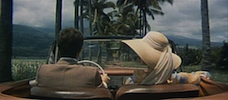
Mississippi Mermaid
1969 -
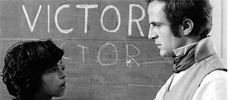
The Wild Child
1970 -
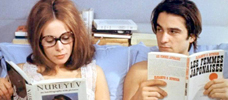
Bed and Board
1970 -

Two English Girls
1971 -
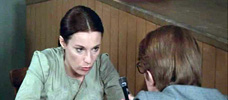
Such A Gorgeous Kid Like Me
1972 -

Day for Night
1973 -
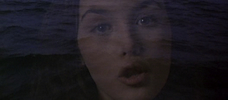
The Story of Adele H.
1975 -

Small Change
1976 -
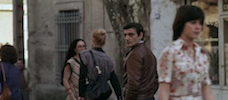
The Man Who Loved Women
1977 -
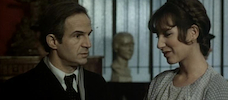
The Green Room
1978 -
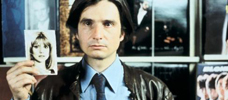
Love on the Run
1979 -
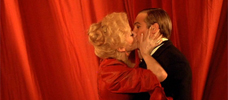
The Last Metro
1980 -
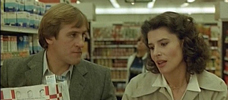
The Woman Next Door
1981 -
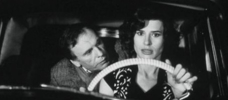
Confidentially Yours!
1983
We don’t do comments anymore, but you may contact us here or find us on Twitter or Facebook.



